The meaty, brothy Yemeni stew is comfort food in times of peace and war
At first glance, the average fahsa restaurant looks more like a venue for metallurgy than, well, cooking. Kitchen staff stand perched above heroically oversized metal pots; propane flames spit out from underneath the cauldrons. But the danger is more imagined than real: these men are professionals. Prep work starts at dawn—fahsa must be served fresh—but the real action starts around noon, the start of the Yemeni lunch hour.
You could call fahsa a stew, but such a simple descriptor belies the complicated nature of the dish. That’s not to say its charms are obvious from looks alone. It is a thick, brownish-red, meat-studded broth served scalding hot, covered in green foam, in a flame-blackened pot. It does not seduce the eye. But the taste silences all critics.
The popular narrative is that fahsa began in the days when the Yemeni highlands were part of the Ottoman Empire, as way of stewing kitchen scraps, donations and leftovers at poor houses. In the centuries since, the stew has slowly transcended its lowly beginnings—the addition of a generous portion of meat distinguishes fahsa from salta, the more direct descendant of the beggars’ broths of the past. Both dishes are ubiquitous in Sanaa now, beloved by rich and poor alike.
Fahsa began in the days when the Yemeni highlands were part of the Ottoman Empire
Like many aspects of Yemeni culture, eating fahsa tends to be an intensely communal experience. The stew is dropped in the middle of a table, accompanied by extra maraq (broth), sahawaq (the local tomato-based salsa analogue), helba (fenugreek foam) and a basket of flat bread or khadam (a sort of sourdough roll). What follows is driven more by instinct than by decorum. Someone will drop in more maraq; someone else will add the helba prior to breaking the seal with a chunk of bread. At its best, the spread is like a perfectly constructed work of art, each element complementing the other. The helba cools the heat, the meat provides depth and the bread provides a means of delivery—though, it’s worth noting, Yemeni bread is often an attraction in and of itself. The eating process isn’t particularly elegant: everyone’s going after the same food in the same pot. But even if you end up elbowing the guy to your right, no one will take offense. The food is delicious and anyway, in Yemen, you’re almost always among friends.
Fahsa has been a recurring presence during my two years in Yemen. Filling and warm, it’s classic comfort food—whether in times of war or peace. At lunch with tribal fighters during Sanaa’s Hasaba War of May 2011, there was something deeply soothing about breaking bread and devouring the meaty stew as the neighborhood around me dipped in and out of chaos. During the heady days of the Yemeni revolution, post-demonstration fahsa lunches with activists seemed like a perfect fit as well, providing vital nourishment as tens of thousands of Yemenis peacefully gathered to call for a better future.

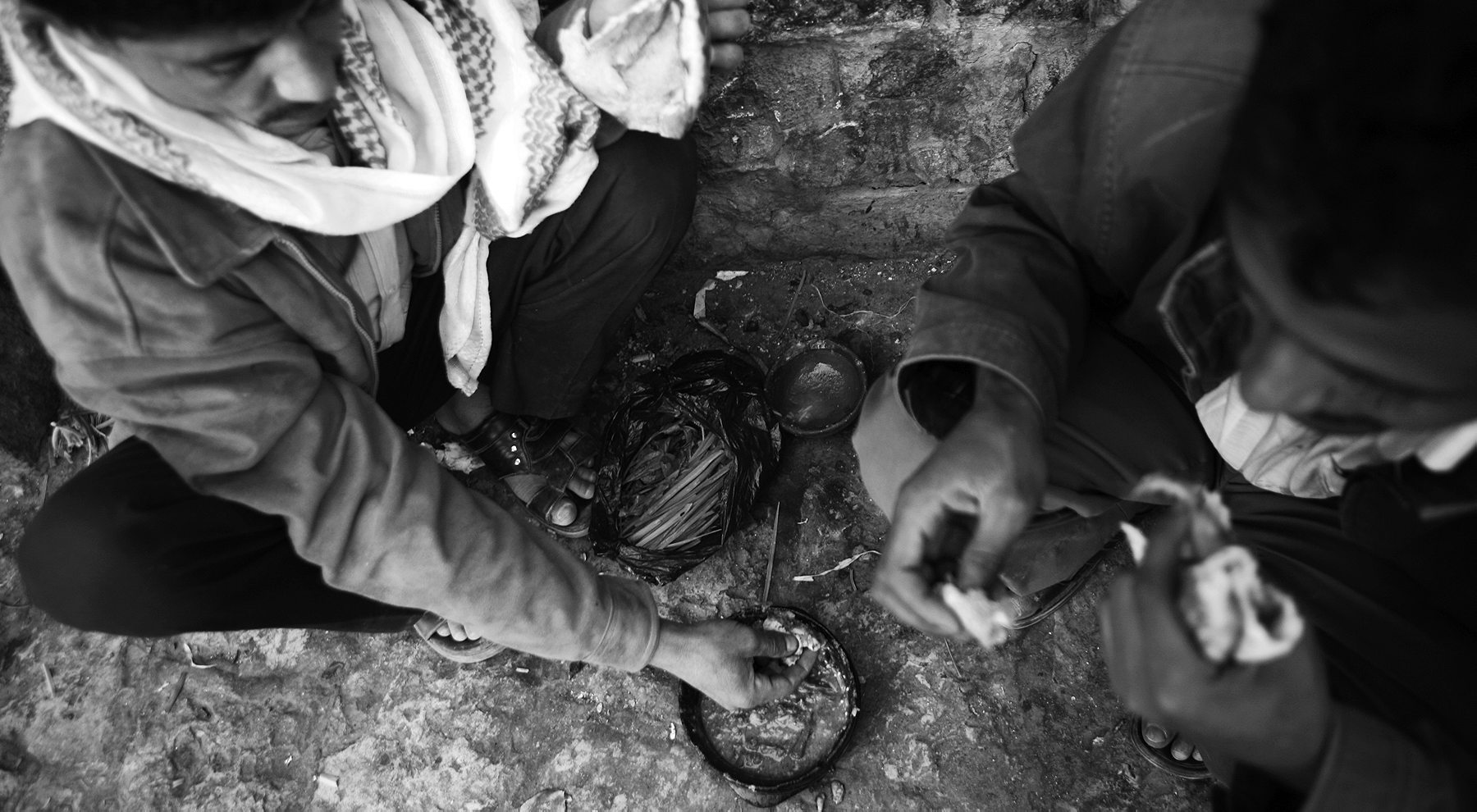
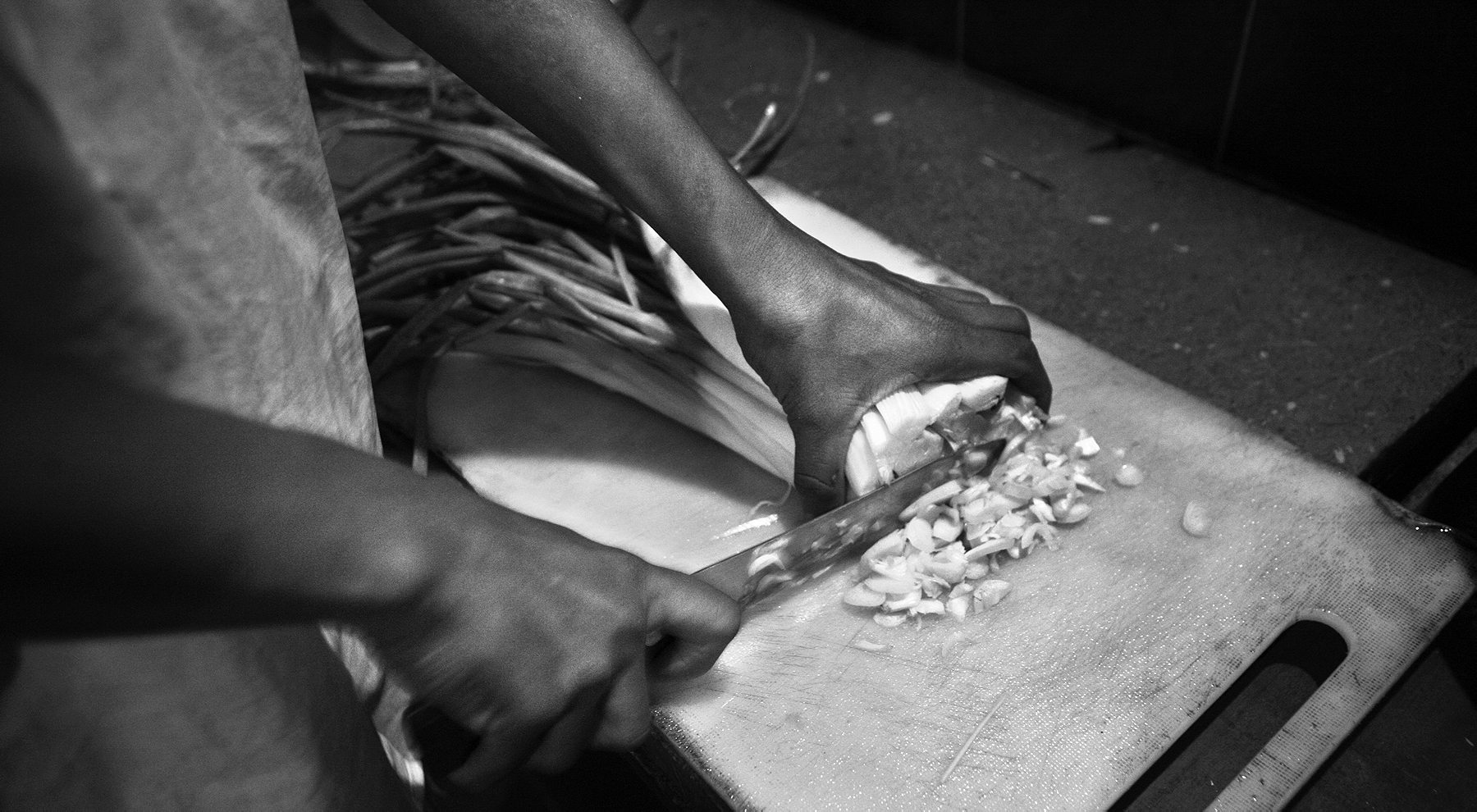
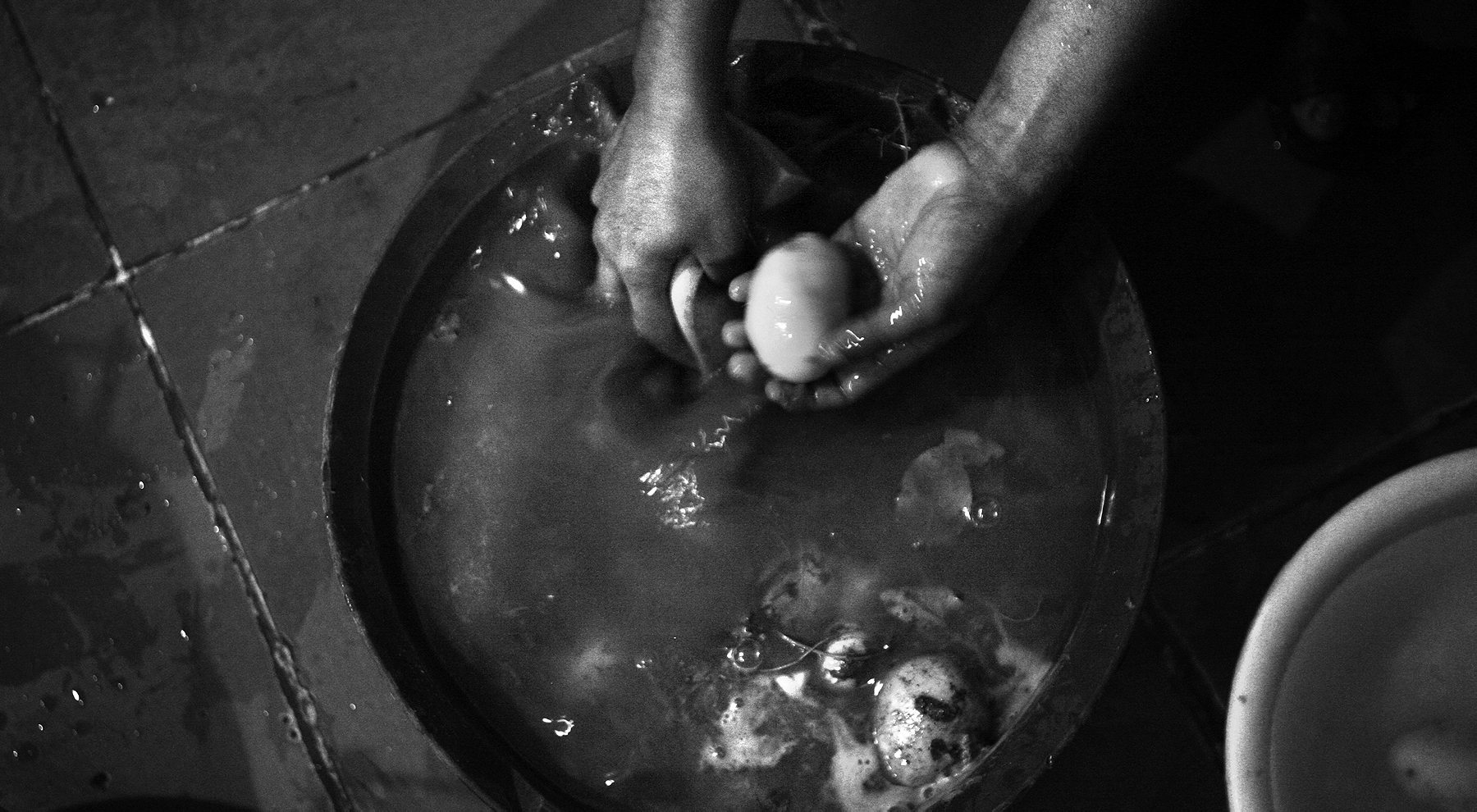

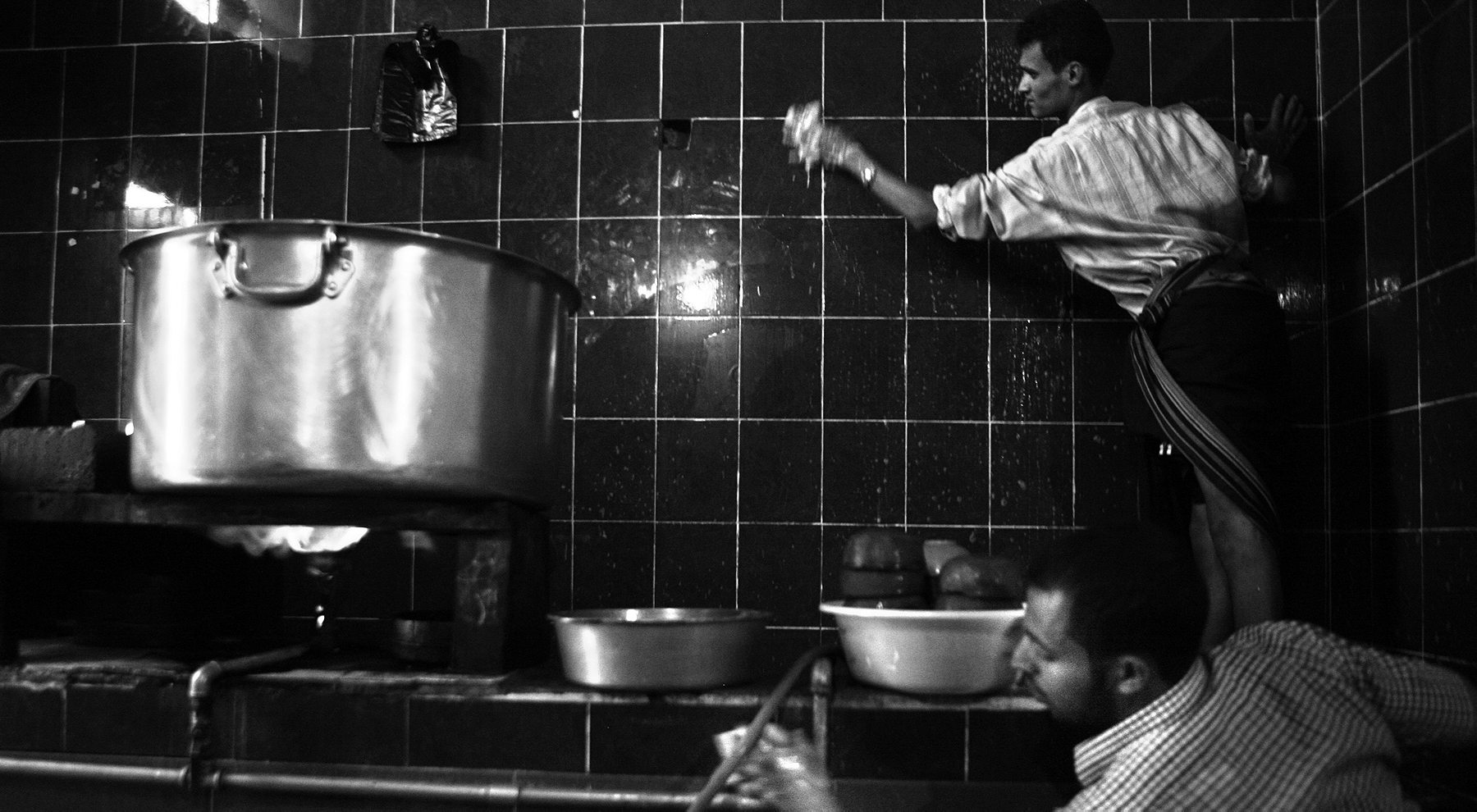

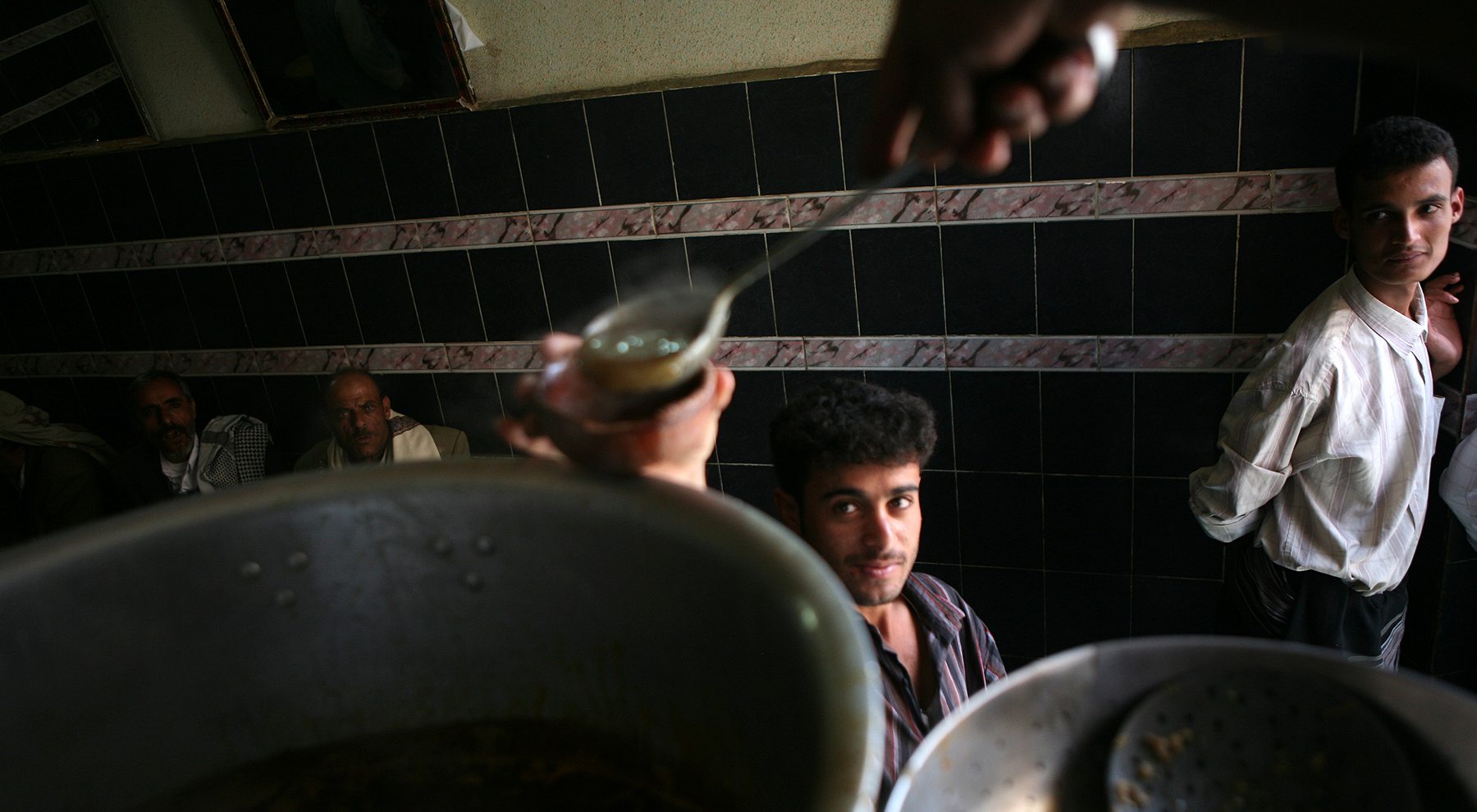
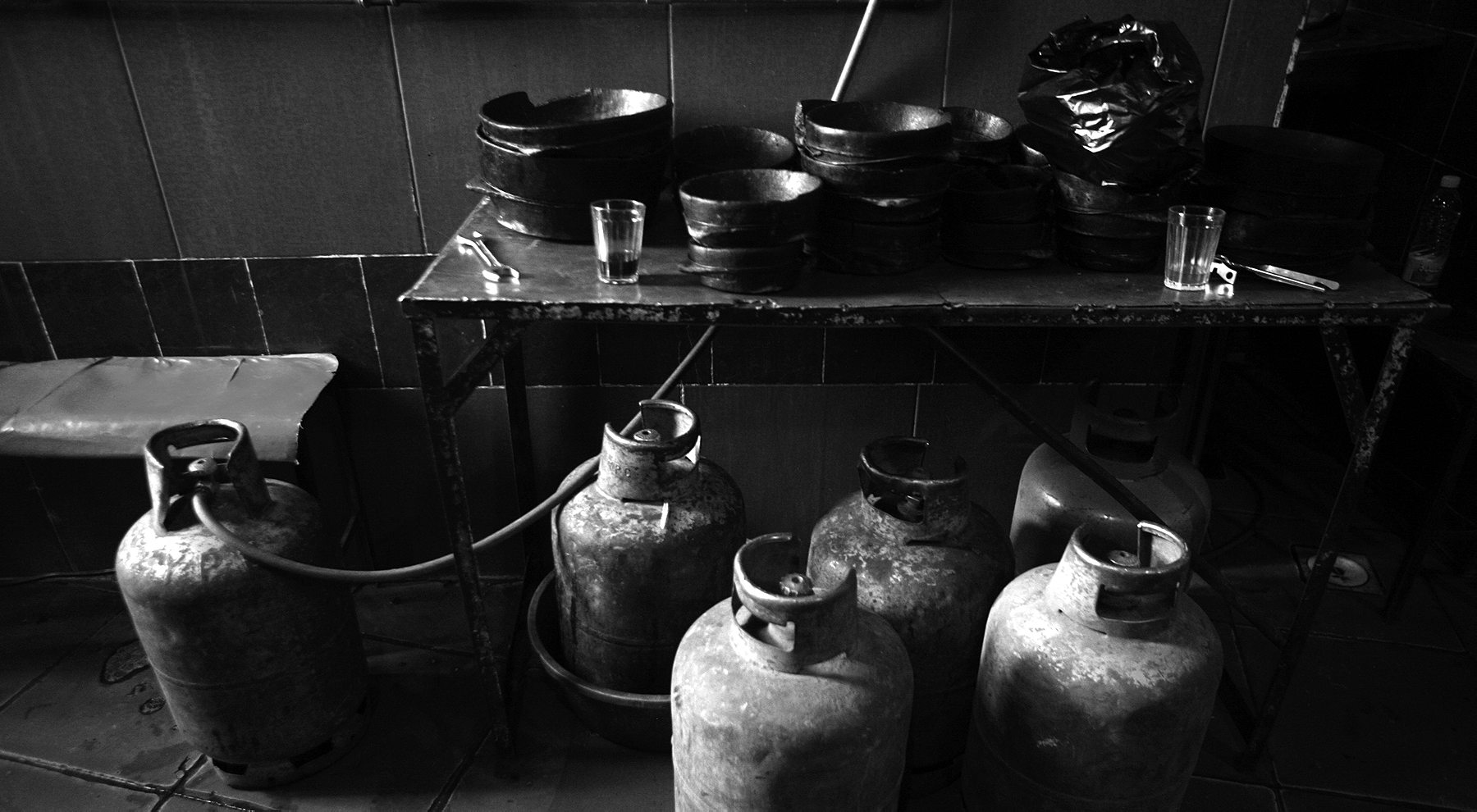
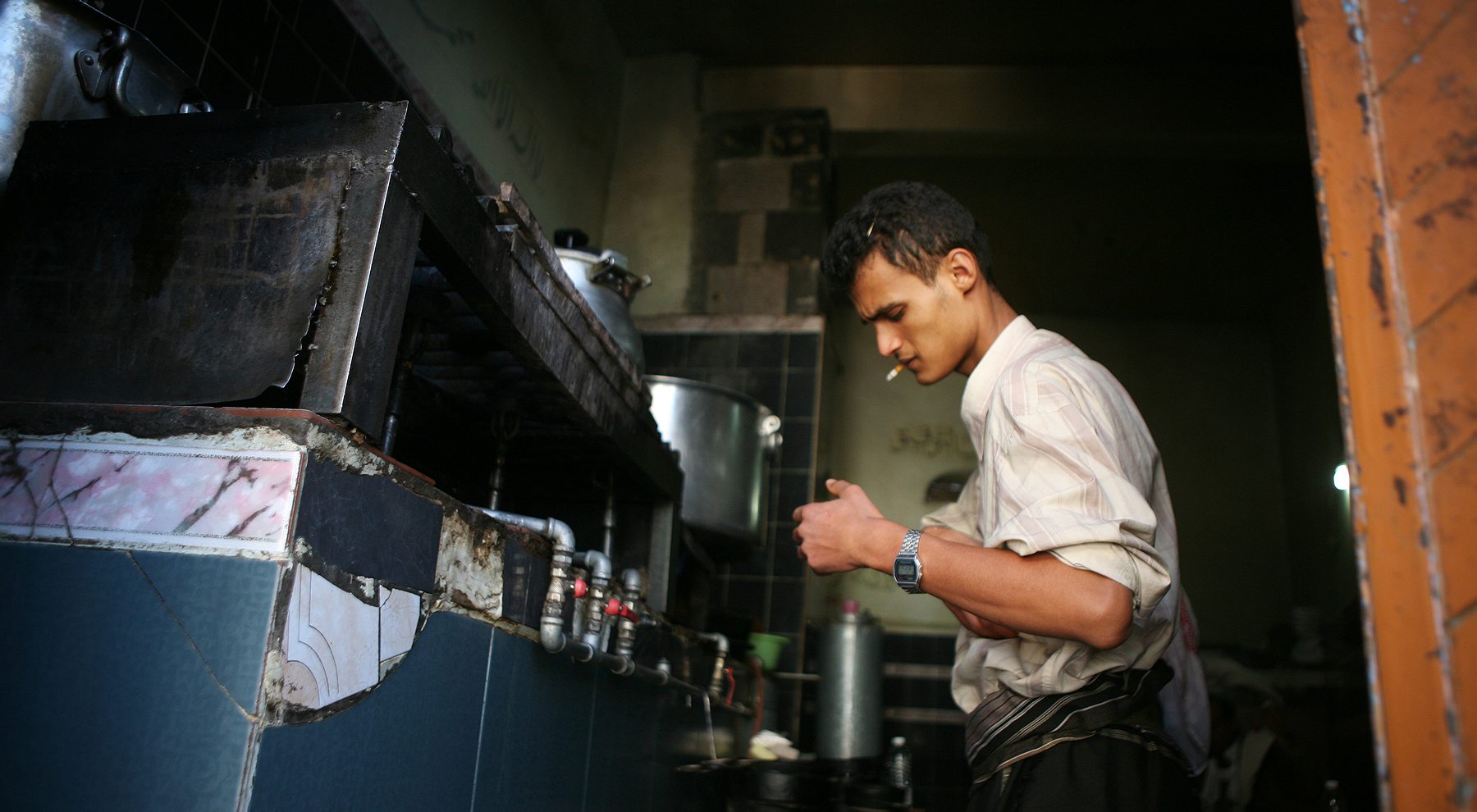
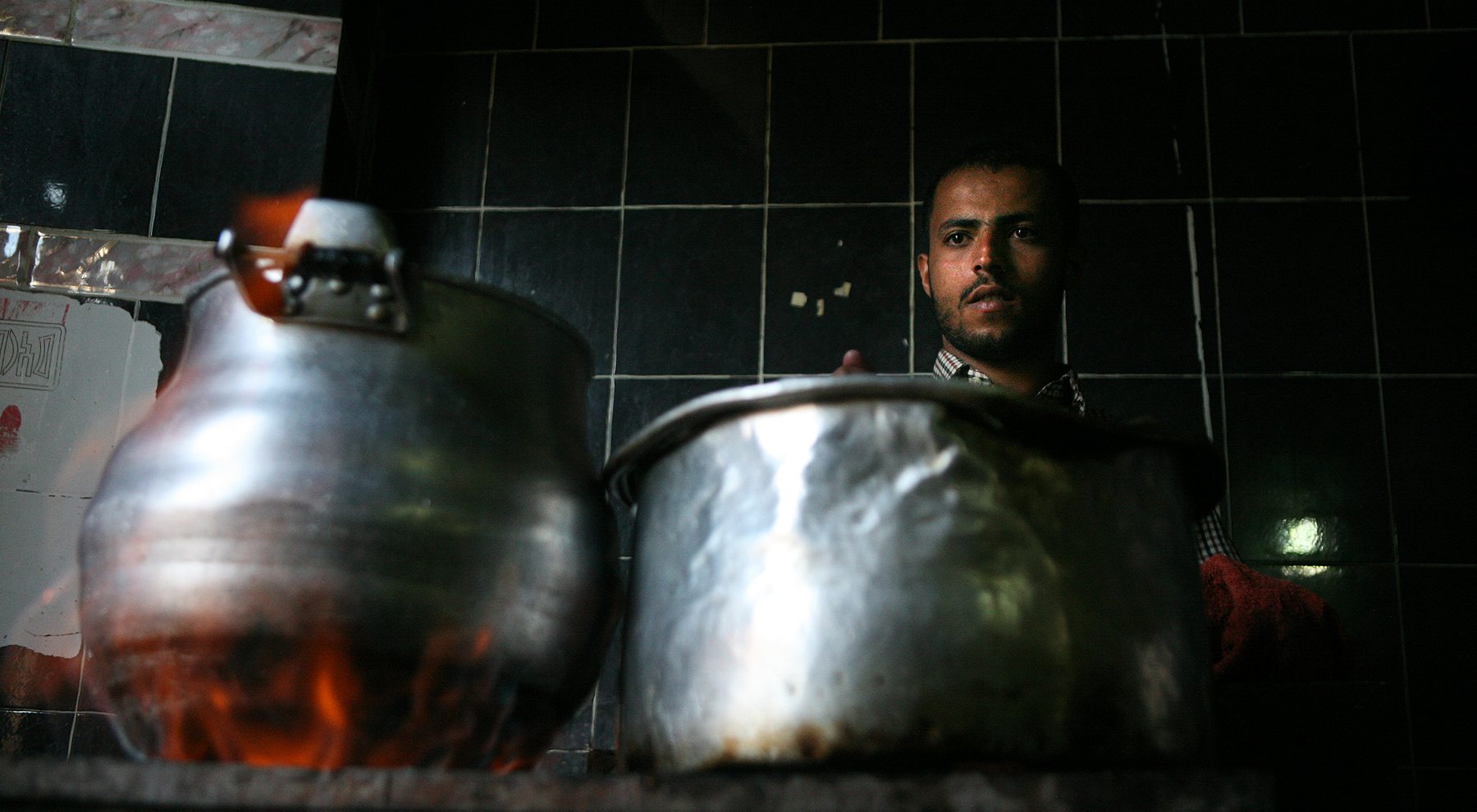
We would often head to al-Faqih, a sprawling, multi-roomed restaurant packed tight with hungry Yemenis. There are other items on the menu, but we always order a fahsa and a salta. Al-Faqih’s salta, which combines Yemeni kebabs (roughly equivalent to Syro-Lebanese kofta) with a potato-grounded stew—has left me with a sort of Pavlovian salivation-trigger every time I see the restaurant’s orange awnings. I once believed al-Faqih served the best fahsa in Sanaa, but a few months ago, I began to wonder if I wasn’t wrong about that, if there wasn’t a better version of it somewhere in the city. I set out on a culinary exploration, following any and all leads. Neighbors and cab drivers kept sending me back to the fahsa places by a market a few minutes from my house, which spans the margin between the edge of Sanaa’s old city and one of the city’s busiest streets. They’re all similarly atmospheric—a cacophony of packed metal tables filling the ground floor of centuries old tower houses—and, ultimately, I came to the conclusion that they all fell into the same quality: good, but not great.
An American friend who refers to al-Faqih as the “truckstop”—out of reverence or derision depending on his mood—took me to a different place near his house that he dubbed the best in Sanaa. First impressions lowered expectations—it’s housed in a shed and the tables and chairs are nearly falling apart—but the curious interjections of English-speaking Yemenis who overheard our conversations suggested that the restaurant was drawing members of the country’s educated classes. The fahsa was good, with a near-perfect balance of spices, but it was still distinctly inferior to al-Faqih’s version.
At lunch with a Yemeni friend, the son of a former minister who I frequently consult for both culinary and political analysis, at al-Faqih, I finally felt moved to ask whether this was as good as it gets. It wasn’t, he said, but he was coy about who the real champion might be. The whole thing slipped from my mind until he gave me a call a few weeks later.

Walking through a khat souq to a nameless restaurant fronted by a large chicken rotisserie, I wasn’t sure what to expect. From the outside, it looked no different than the thousands of other fahsa places in the city. But the pride emanating from the waitstaff as they dropped off our food suggested this place was different. In my subsequent, nearly weekly, visits, they’ve been pleased to see me, but they’ve never seemed particularly surprised; both the content grin that accompanies the kitchen boss’ wave and the satisfied smile in the framed portrait of the owner, who hails from a rural area outside of Sanaa, come off as sly acknowledgements of their daily triumph.
I always order a kamil, a four-part meditation on food served in flame-blackened clay pots that will usually feed two friends and me. There’s the classic fahsa, plus one dish that’s basically lightly seasoned chunks of meat, an okra stew, and another dish that combines tiny chunks of tomatoes and ground beef. Shared stocks and spices tie them all together, though the fahsa, with its perfect broth, subtle zing, and tender, stringy beef is the star. I’ve run into plenty of Yemenis elites in subsequent visits—they tend to frequent the private rooms—but, still, by and large, the clientele is a perfect cross section of Yemeni society, little different than the mix of office workers, tradesmen and hungry students that tend to be found at any other fahsa place. I feel as if I and other regulars form some privileged grouping. Despite its transcendent food, the place is relatively unknown; selfishly, I can only hope it stays that way.
When I told a Yemeni friend that I had found the best fahsa in Sanaa, he asked me if I meant al-Faqih. No, I told him. “You will never look at al-Faqih the same way,” I said. “I’m taking you, and if you don’t agree with me, I’m deleting your number from my phone.”
We had lunch together with another friend a few days later; I took no small pride in the fact that both agreed that it was better than al-Faqih. Lingering afterwards as waitstaff cleared the empty clay pots off the concrete table, I had rarely felt so satisfied. I had just gorged myself on excellent food, in addition to succeeding in completely reordering two Yemenis’ conceptions of where to eat their national dish. Finishing our traditional Yemeni meal and readying ourselves for a traditional Yemeni afternoon spent chewing khat, it was clear to me: fahsa epitomizes everything I love about this country. Its humble beginnings reflect Yemeni ingenuity; its unremarkable appearance hints at the unexpected, yet intoxicating, charm of a country often maligned as a terrorist-infested “failed state.” The way it is consumed embodies the general attitude towards personal relationships here—there’s something great about having friends who you can feel completely at ease with, even as you’re crammed in uncomfortable seating angling for the same steaming pot of food. This is true meaning of comfort food: fahsa, for me, means comfort with yourself, with your friends, and most of all, with your adopted country.
[All photos from Jabar’s fahsa shop in Sanaa by Rachael Strecher. See more on Josh Berer’s site]